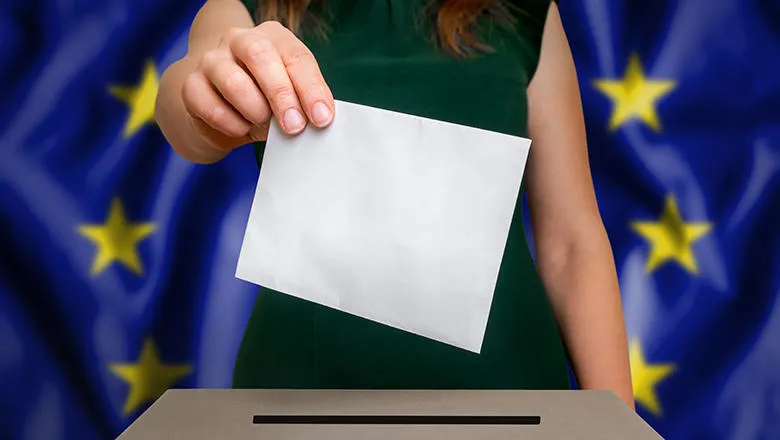21 May 2019
How women could vote in the European elections – and why it's important
Professor Rosie Campbell
ROSIE CAMPBELL: As they constitute more than half of the electorate, a "women's vote" could heavily influence the outcome

Since women first went to the polls in 1918, the idea of the “women’s vote” has concerned the main political parties. Over the years a variety of tactics have been used to woo female voters: 2010 was dubbed the “Mumsnet Election”, and who could forget Labour’s pink bus in 2015? Meanwhile "SamCam", with her baking and charity work, was rolled out to improve the Tories’ image in the eyes of women voters.
The “women’s vote” is problematic because it “others” women as distinct from the norm – men. But it’s also inaccurate: given that women voters outnumber men, they are the average voter. And since 1974 there’s actually been little difference between female and male voting habits. However, that all changed in 2017, when for the first time, women switched from marginally supporting the Conservatives to backing Labour by 8% more than men.
So what will this recent development – which is beginning to mirror the US, where a greater proportion of women have voted Democrat than men since 1980 – mean for the European elections on 23 May? Will the trend continue or reverse, and what will this mean for a future general election?
Could women decide the outcome of the European Elections?
The Office for National Statistics doesn’t break down registered voters by sex, but we know there are more women voters for number of reasons. Although more baby boys are born each year, by age 25 women already outnumber men due to slightly higher morbidity amongst young men. Added to this, women outlive men – there are two times as many women than men aged 90 or over. This matters because participation among the “grey vote” tends to be higher than in the electorate overall. And it’s not just about life expectancy; the overwhelming majority of prisoners are men, most of whom can’t vote. With these population trends in mind, the 2017 British Election Study estimated that the UK electorate is 54% women vs 46% men – a pretty substantial gender gap.
This means that women can play a greater role in deciding elections. So how women respond to the new political landscape on 23 May, with Brexit dominating and a rainbow of choice on the ballot paper, could predict the outcome of a future general election.
Will the trend in women voting Labour continue?
Historically, women tended to support the Conservatives slightly more than men. New Labour reduced this slightly by picking up the votes of younger women but as mentioned in 2017 significantly fewer women voted Conservative for this first time, improving Labour’s fortunes on polling day.
Why this marked change in voting habits? It may be in part down to the different policy preferences of the sexes. Women favour increased taxation and spending on public services and are less supportive of cuts particularly in health and education. They have more egalitarian views on a number of issues and are usually more progressive on gender equality and less often colour prejudiced or homophobic than men. Labour’s anti-austerity messaging after almost a decade of cuts, may therefore have resonated with women voters.
Although the European elections won’t be fought over domestic policy concerns and will be dominated by Brexit, women in the past have proportionally cared slightly less about the UK’s relations with the EU than men. So the ideological differences between the main political parties may still influence their choice.
Will women vote for the new political parties?
The addition of two new political parties complicates the political landscape. Current polling shows the Brexit Party in the lead, whilst Change UK is struggling to cut through. However, polling doesn’t account for undecided voters, the majority of whom are likely to be women.
The data shows that women are more likely to make up their minds who to vote for closer to election day than men. In the run up to the 2017 election 18% of women compared to 10% of men said they did not know who to vote for. This also reflects surveys where women are more likely to select "Don’t know" in political attitude questions.
This means that undecided women swing voters might still influence the success of the two new parties – Labour’s success amongst women in 2017 was the result of a late swing in the campaign.
So who are women swing voters more likely to back? Generally, women voters are less likely to back new parties, tending to stay on familiar territory. Moreover, although there was little difference between how the sexes voted in the EU referendum, men remain more fervently anti-EU than women. This explains the greater support amongst men for parties like UKIP, whose success in 2015 was largely driven by drawing men away from the Conservative party. This also reflects Nigel Farage’s relative unpopularity amongst women compared with men. So women voters might be less likely to back the Brexit Party. But given the tendency not to vote for new political parties, the swing is not likely to be towards Change UK.
An indicator for the next general election
There are many unknowns when it comes to the European elections, but we can be certain that the electorate will be majority female. As a voting bloc, they therefore have significant power to influence the outcome. Treating women as a homogenous group is an oversimplification, but recent trends and tendencies amongst female voters should not be overlooked: how women vote in these elections could give us a valuable insight into the outcome of a future general election.
Rosie Campbell is Professor of Politics and Director of the Global Institute for Women's Leadership.
